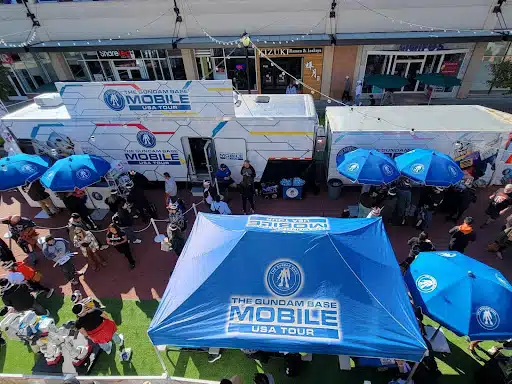According to the author of “Brand Experiences: Building Connections in the Digitally Cluttered World,” Steve Randazzo, you need to drive sales, elevate awareness, and educate your customers to promote your product. In other words, you need to make your target audience love your product as much as you do. You can always rely on TV commercials as the conventional way of advertising. However, if you look at the stats, you will soon realize that TV advertising is an outdated concept with a decreasing audience. And this is unlikely to change unless the Internet suddenly disappears.
Steve Randazzo had an experience in which he emotionally connected with a Volvo commercial he saw while searching for the safest car for his family. As he described in his book. “this brand earned my business by engaging with me at exactly the right time, creating an emotional connection at the moment in my life when I needed one.”
With experiential marketing, you do not need to wonder whether your audience pays attention because you’re standing before people as you offer your product. However, it is essential to choose the right place and time for creating effective brand experience. People are more open to new information and experiences when they are in familiar settings. For this reason, offering healthy yogurt samples to a group of moms watching their children playing in the park is a perfect pitch. Because parents will interpret this as a helpful and sincere gesture, remembering it as a pleasant experience.
Experiential strategies are designed to help brands recognize situations where people feel open-minded and then provide valuable experiences to create emotional and physical connections.
Choosing the right place to build a brand experience is crucial when it comes to handing out free samples, keepsakes, or giveaways. While grocery stores are a natural environment for people promoting various food products, a person who is marketing cell phone plans and subscriptions will probably feel like an intruder. This is because food promoters are a welcoming addition to shopping, and people do not mind trying something new when it is offered. On the other hand, signing a cell phone contract is not something people think of when grocery shopping. Companies that have samples to hand out can attract numerous customers this way.
What about those who need to promote larger products or more complex B2B services? Handing discount coupons, organizing live demos, or putting on trade show tours are good ways to provide memorable experiential activations. Bear in mind that most valuable giveaways fulfill customers’ needs while reminding them of the company’s products and services. The key to a successful giveaway is matching the brand’s message and value to the item. For example, if you promote a time-saving software solution, you should offer something practical and efficient, like a pocket planner or Swiss Army Knife, relating your product’s main feature with the giveaway.
We all make impulsive purchases sometimes. People may get hooked on products they saw on one of those shopping channels and order it without overthinking. What is the secret of the shopping channel’s success? Unlike short commercials, these interactive shopping networks offer a detailed presentation of products, enabling people to see how they work while explaining how to use them in real-time.
For this reason, the QVC interactive shopping network has 15 channels and 7 websites, and it makes $8.7 billion in net annual sales. YouTube unboxing videos are the upgraded QVC product presentations fit for younger customers. The more senses the product is able to engage, the stronger the customers’ impressions are. Thus, more and more brands use the advantages of virtual and augmented reality in their campaigns to engage consumers in the product’s world where they can interact with this product in a highly immersive environment, creating an unforgettable experience. Therefore, experiential marketing combines powerful sensory information with a compelling brand presentation to create lasting memories in consumer’s minds. After these highly-engaging experiences, consumers will start thinking, “Hey, I have to have this,” instead of “Why do I need this?”. To motivate consumers to make this transition, you need to build brand experience and bring your product to life in a highly-engaging way.
This transition in thinking is the driving reason why experiential marketing works so well. Reaching the realization that someone really needs your product is the key to interaction between you and a customer.
Go Where the Ducks Are
This book’s author likes to use the saying, “If you want to shoot ducks, go where the ducks are,” to point out that marketers require more than just the right tools to attract customers. They need to create an appropriate context and target the audience in their “habitat.” Digital marketing experts understand this concept. Facebook allows marketers to target people by factors ranging from location to employment and political views. Ad services promise the same by putting your ad in front of people who are interested in your content. However, users’ interaction with online ads is fairly limited, and most people find them annoying, harassing, and counterproductive.
So how do you target potential customers? Always bear in mind that experience beats advertisement. Experiential campaigns best work in peoples’ natural surroundings, where they are comfortable and open to receive information. Offer your product in places that make sense. Furthermore, if you offer fun, memorable experiences, accompanied by some handy keepsakes, you may easily plant a seed of ear-to-mouth marketing that will spread the word about your product far beyond your target group. “Sweet Martha’s Cookies” are the perfect example of the “go where the ducks are theory.” Namely, Martha, the owner of this widely known cookie brand, started with two booths at the MN State Fair. Today, she runs a successful business that accumulates an incredible $4 billion in profit during the 12-day fair. The secret of her success is in the gigantic portions of fresh cookies that lure you into eating them right away, along with the fact that she placed her booths beside the milk stand. Who can resist the classic combination of milk and cookies on the go? The point is, Martha has found the perfect environment for her brand, and she developed a successful business. You can say that she picked the right place and the right time to promote her appealing product.
People are willing to accept new technologies when they feel they are in control of the experience. When done correctly, experiential activations allow consumers to choose their own adventures. They will feel empowered during these moments of discovery, opening their mind to learn about the brand and the product behind the brand’s experience. Let your customers decide whether they will engage in the experience and for how long. Do not force anything and let them have full control over it. People who guide their own experiences leave with more positive impressions about the product than those that don’t.
Provide a Professional Field Trip
Everyone remembers the joy of school trips when we were children. We still remember the places we visited or events we attended back in the day. Your brand can offer memorable, convenient, and free of charge field trips to its ideal customers.
Not so long ago, trade shows were the best field trips B2B decision-makers could take. All interested parties used to gather at one place to visit different presentations or discuss business prospects. Sending high-ranking representatives to these events was essential for building the company’s reputation. However, it seems that these days are long gone. In the final quarter of 2016, the B2B exhibition industry marked the first quarter of decelerated growth after 25 consecutive years of expansion. According to another survey, 79% of participants think that major decision-makers do not attend trade shows, adding a level of separation between sellers and buyers. This situation may be devastating for the B2B world. Fortunately, B2B mobile roadshows are the best promotion option to make a lasting impression. Here are some major advantages of mobile roadshows compared to appearing at a trade show
- Roadshows are time-efficient. You only need to load your vehicle with products and hit the road to visit every company on your dream clients list.
- A marketing roadshow offers a fun, interactive, and immersive field trip for the entire office to get every attendee’s undivided attention for 30 minutes.
- Roadshows provide you with the opportunity to talk directly to the decision-makers without the competition which puts your brand in your customer’s spotlight.
- Roadshow events have a huge upside with building your pipeline and cutting your sales cycle in half.
Despite the evident advantages, many people from the marketing business still observe mobile roadshows as more expensive field sales. Quite the contrary, well-devised mobile roadshows may provide a level of emotional engagement and hands-on participation that no traditional field sale can match.
If you are intrigued by this excerpt on how to educate consumers about your brand, feel free to contact us and order the book.




